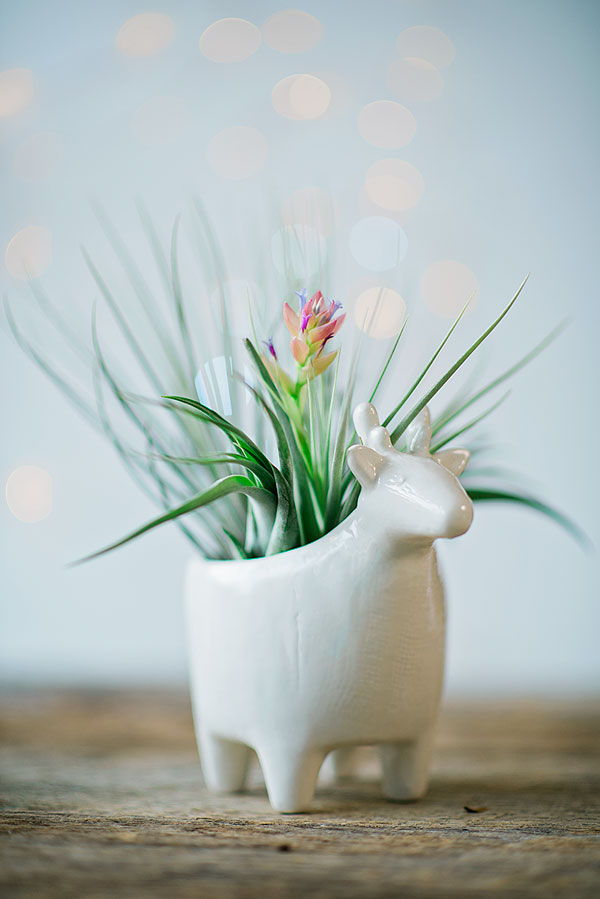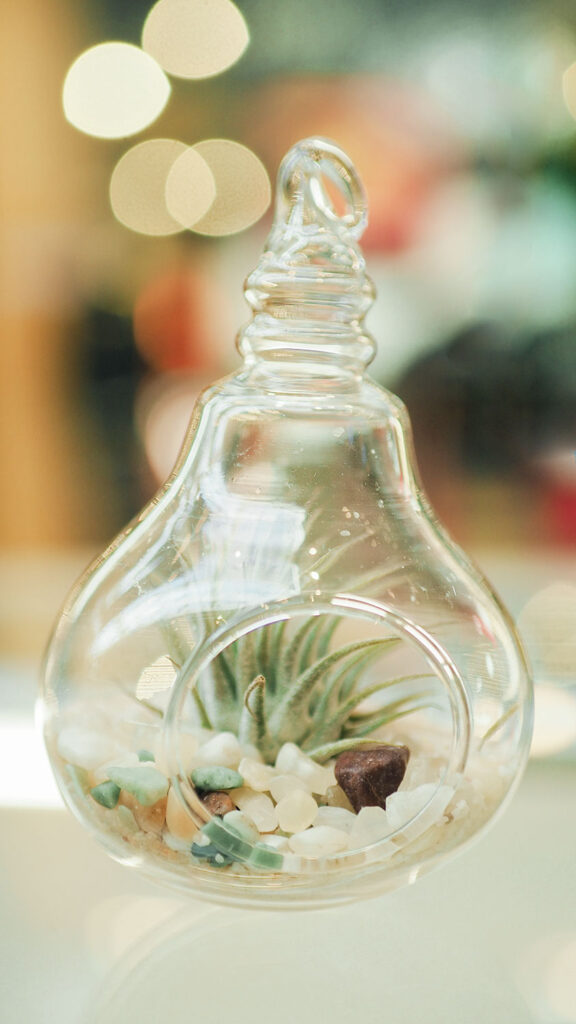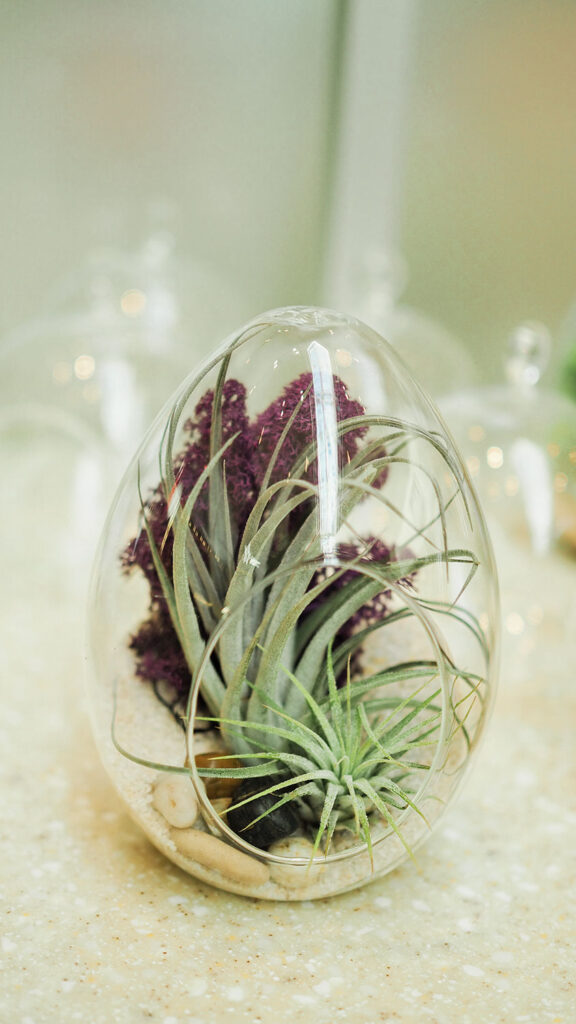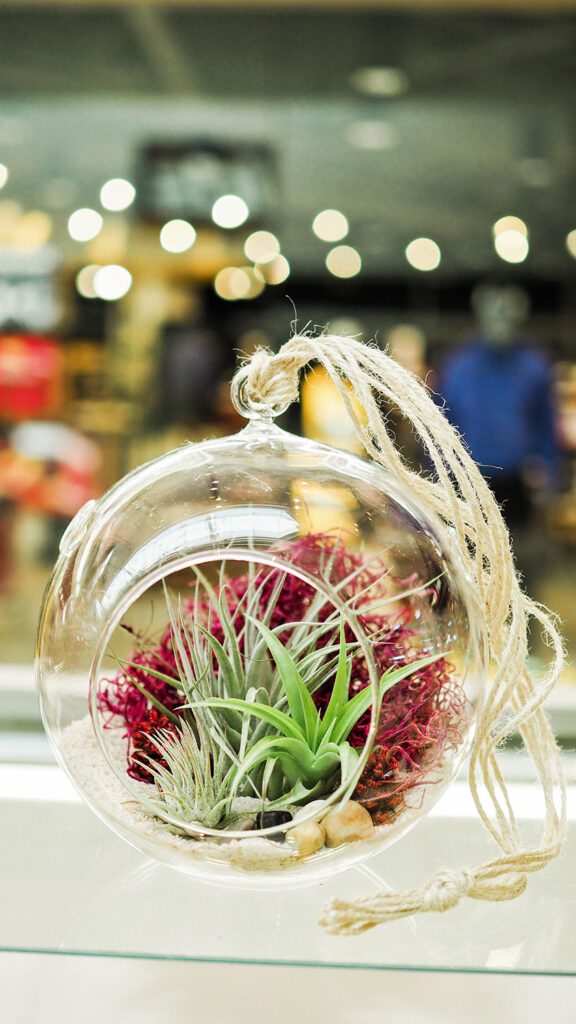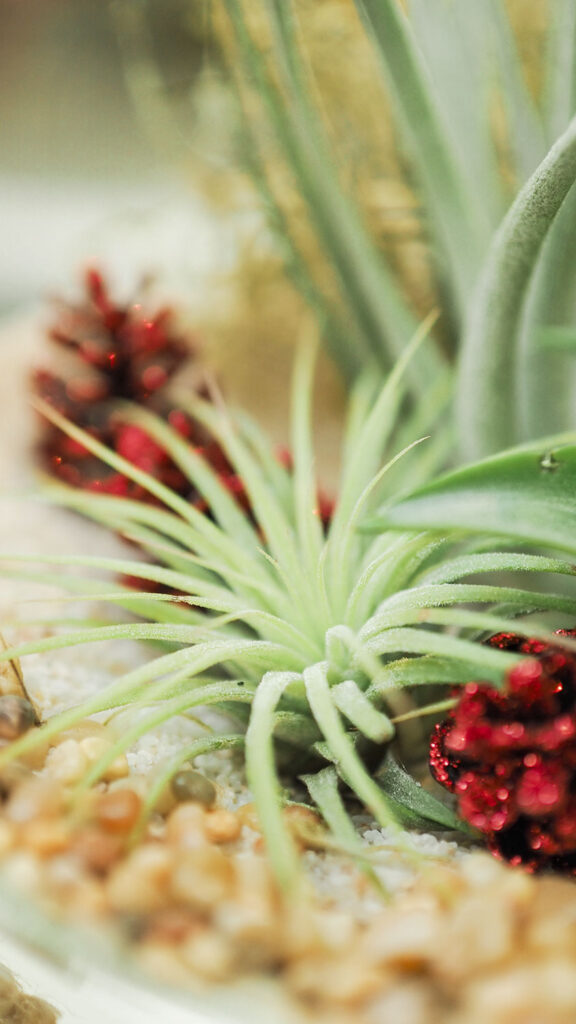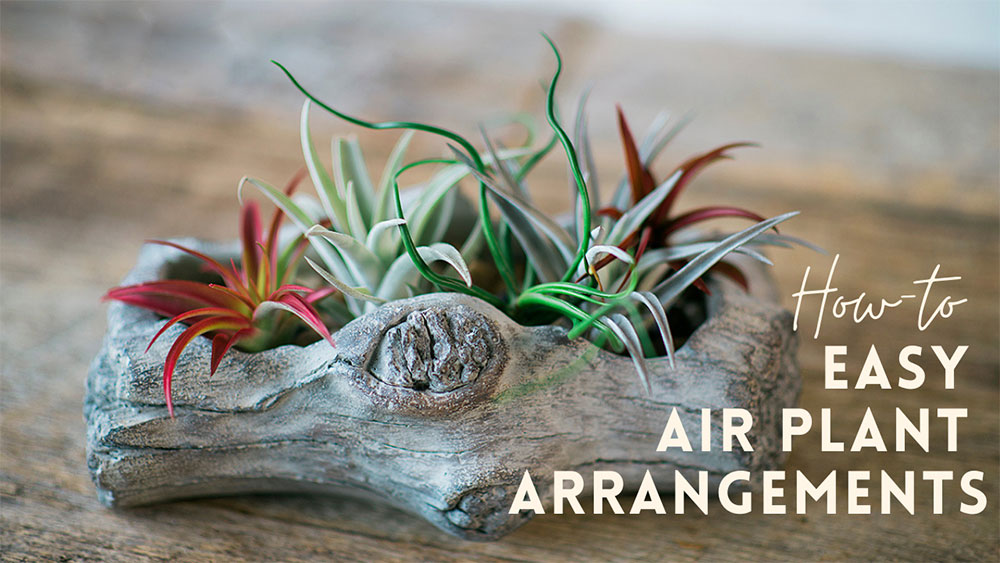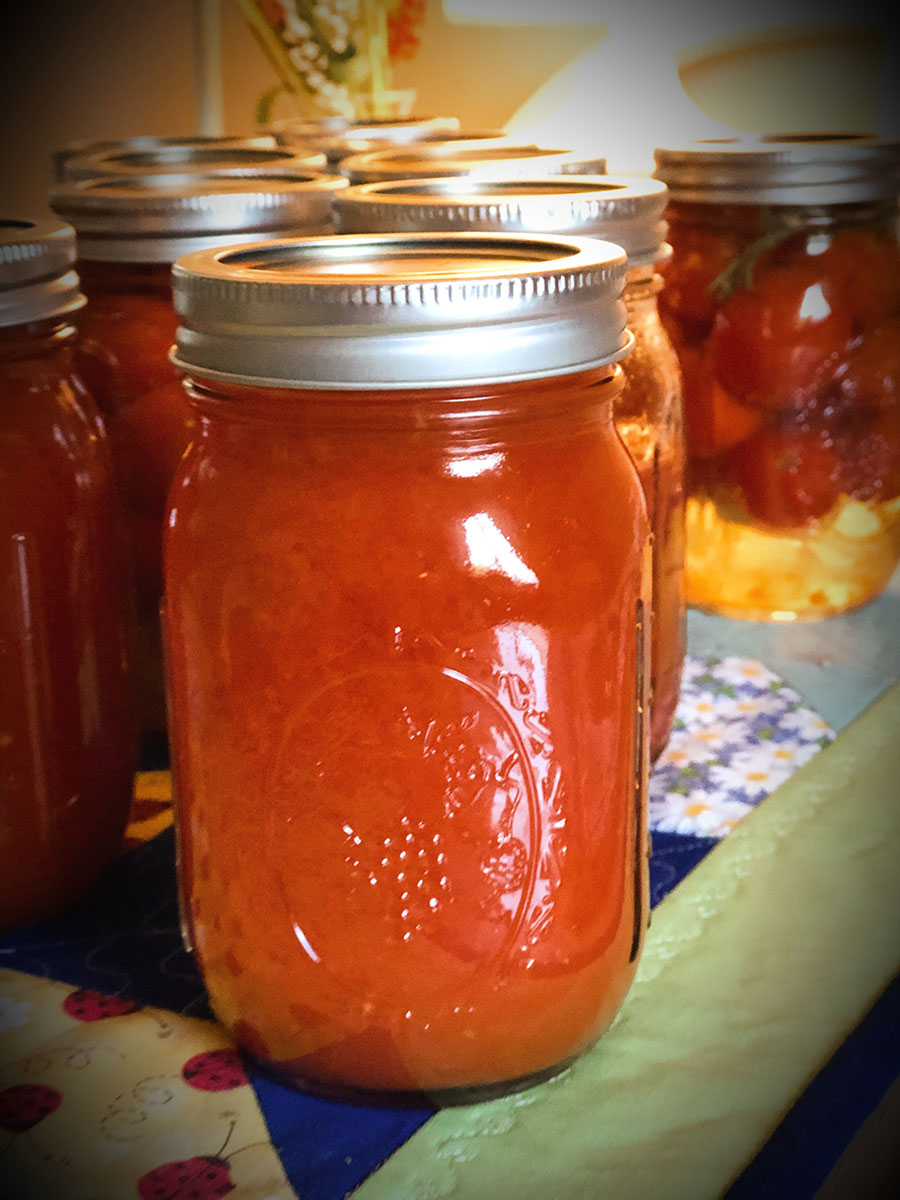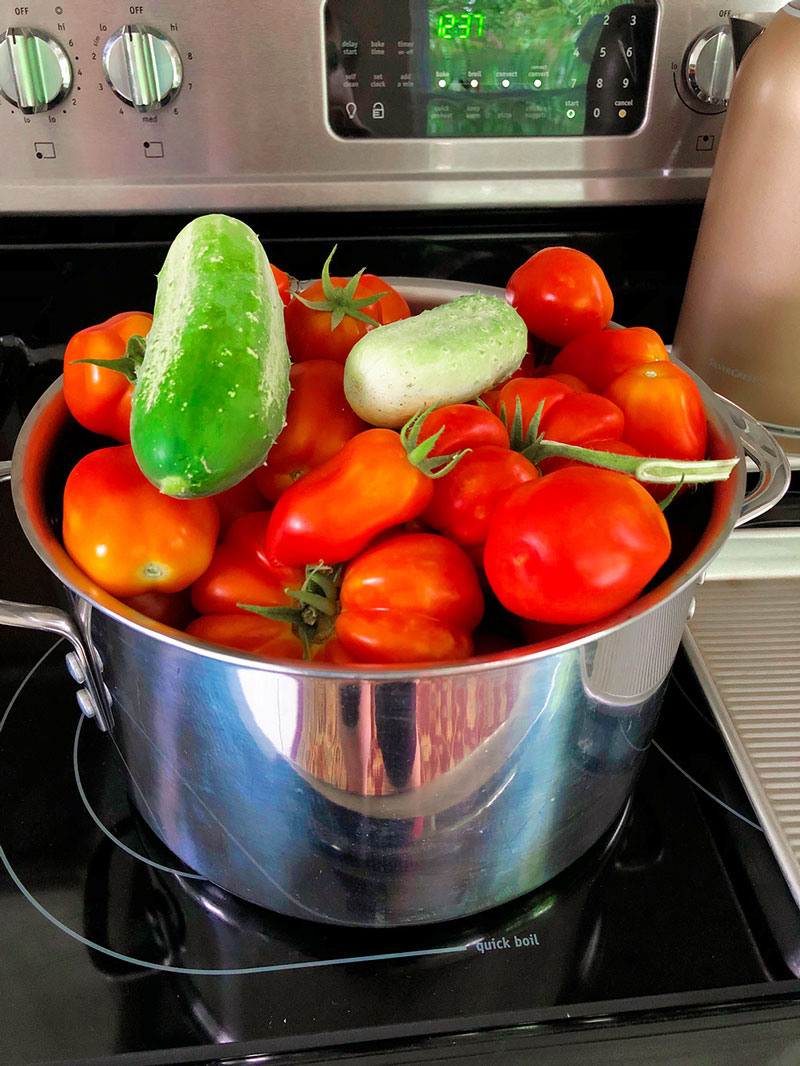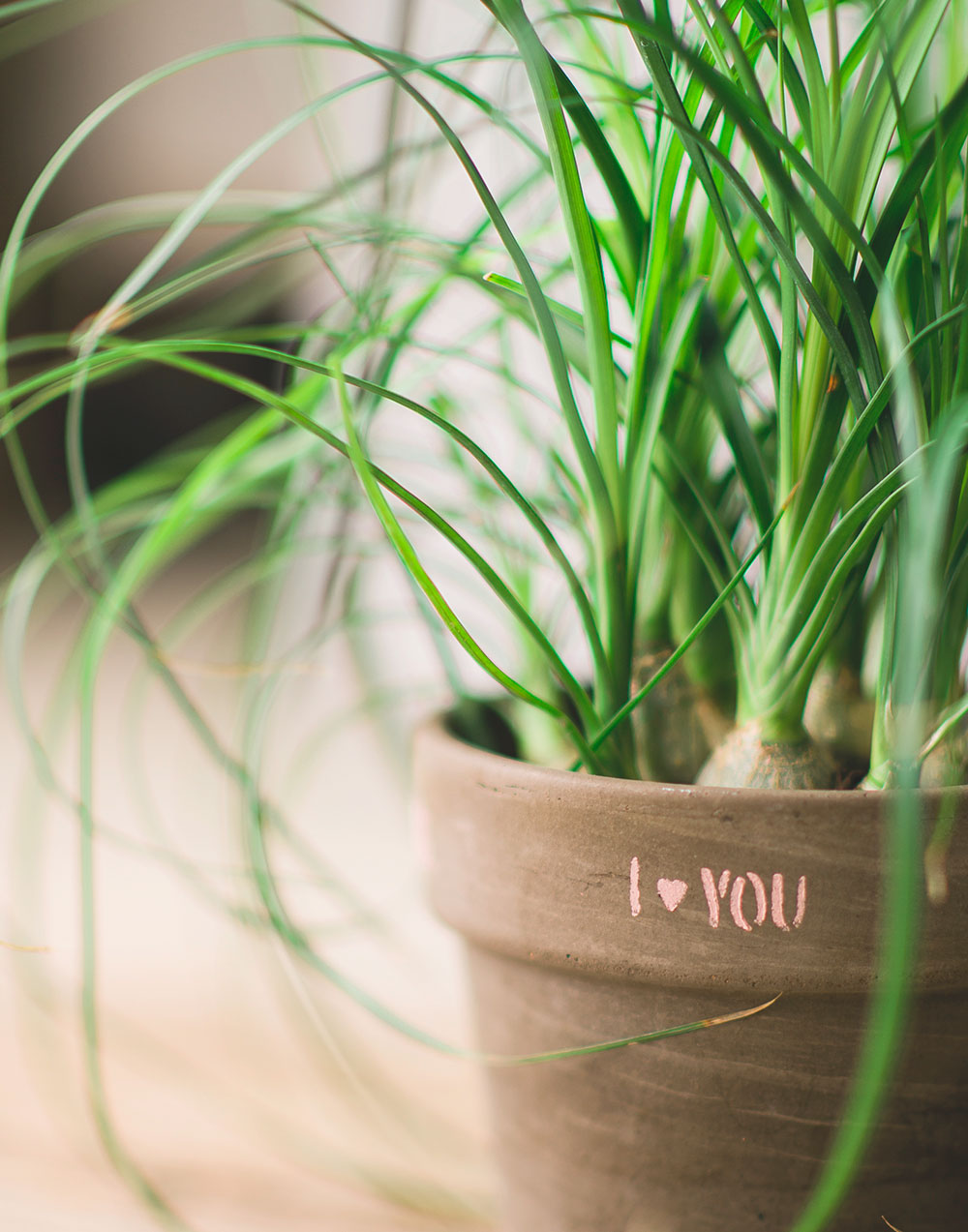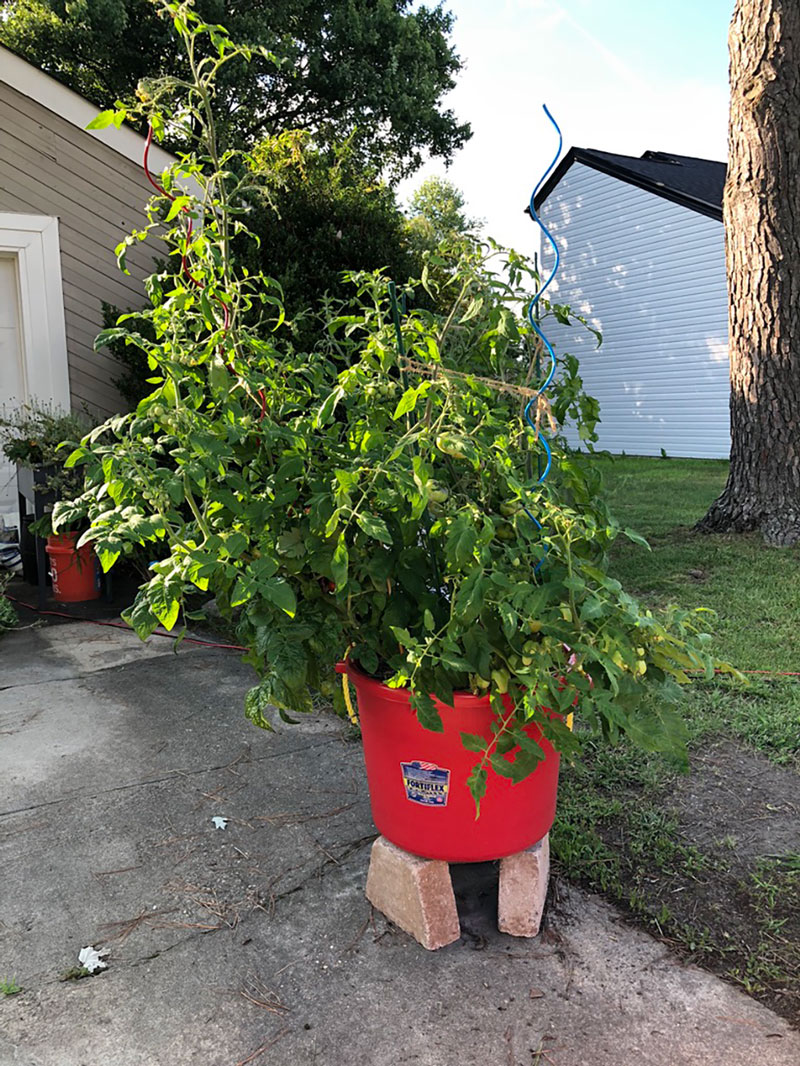Displaying Air Plants
Tillandsia plants, better known as Air Plants, are growing in popularity year over year. The question I keep hearing is, “These are interesting for sure, but how do I display air plants?”
To be honest, it’s a bit more freeing, because with air plants, ANY container is going to work. There is no need for soil and no worries about good drainage, so anything from teacups to glass containers are appropriate for displaying air plants.
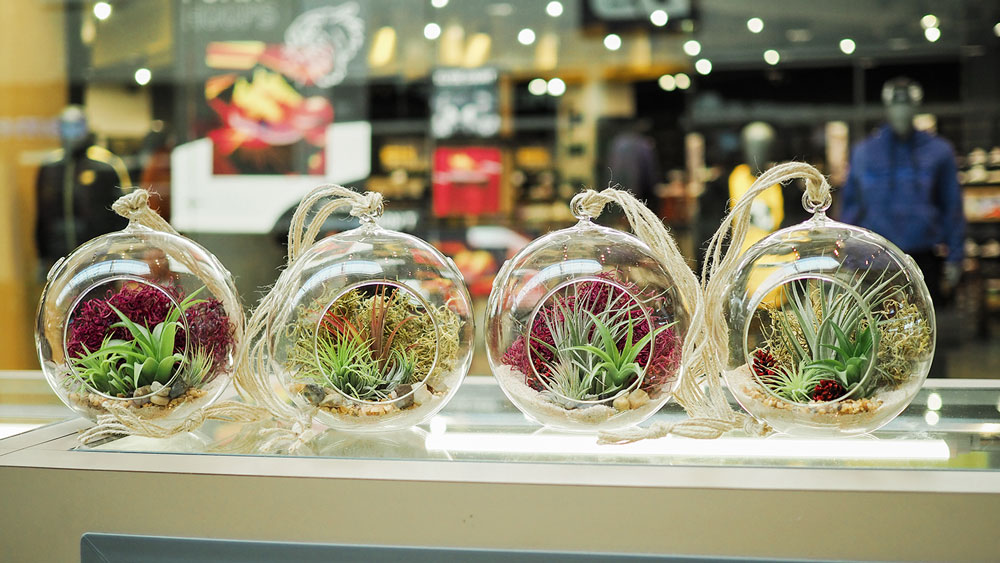
What are Air Plants?
- Tillandsia, the botanical name, is a genus of plants with more than 600 different species. The common name is Air Plant which is how most of us know them. So air plants are Tillandsia and vice versa.
- Tillandsias are epiphytes. In their natural environment air plants grow on other plants—clinging to trees or rocks—rather than by rooting in the ground. They will grow on bushes, rocks, and shrubs. For my readers in the United States, you might be familiar with Spanish Moss. The botanical name is Tillandsia Usneoides.
- The bottom line is this type of plant uses roots to attach to a host, but absorbs moisture and nutrients from the atmosphere via its leaves. This is why they are found in humid environments. Humid zones have much higher levels of moisture in the air, and since this plant genus absorbs what it needs from the ambient environment, then it only makes sense they need to live in a humid zone.
In a home setting, this means air plants don’t need to be potted in soil. They are unconcerned with drainage so any decorative container will beautifully display them.
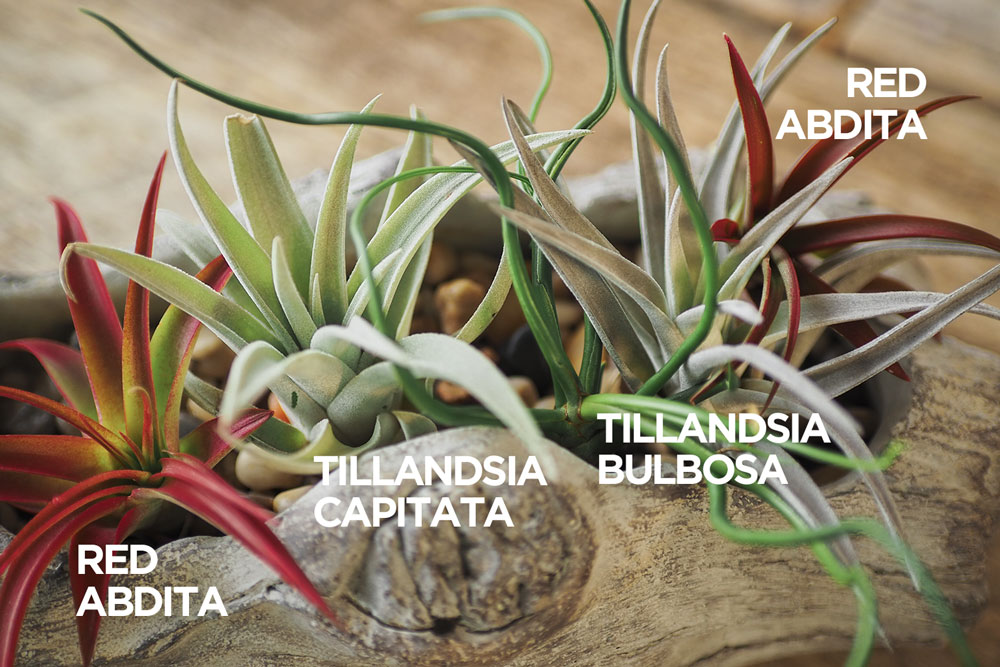
The biggest misconception is that air plants live off of air alone. Well, in their natural habitat, sort of. In your living room? No way.
How to care for Tillandsia, or Air Plants:
- In their natural environment, air plants receive water from humid air and rainfall. In your home, they will need regular watering which comes in the form of a nice long soak. I found they like spring water the best, so fill a large bowl with spring water, and put your air plant collection into the water. Allow them to soak for 2 or 3 HOURS.
- If you want to use tap water, fill the bowl the night before to give the chlorine a chance to evaporate. Chlorine is toxic for you plants, so don’t ever just fill a container with tap water and drop them in right away. Off topic, but worth considering; if it’s that bad for your plants, what’s it doing to us?
- Once they’ve had their nice long soak, take them out one by one, grasp gently at the base and shake them vigorously to remove excess water. Place them upside down on a towel to dry over night. Tillandsia can still suffer from water rot just like any plant, so don’t allow water to stay in the leaves.
- Air plants need a high light environment, so make sure they receive adequate sunlight. Filtered light is always best, so don’t put them in a south facing window sill in the south in August and expect them to thrive. Next to the window out of direct rays would be a better solution.
- In the summer, I collect rain water and use that to soak my plants. If I can get them outside in summer rain showers I try to do that. Rain water has nutrients not in filtered water, so anytime plants can receive rain water, they always do better.
- While I’ve seen people recommend diluting plant food in the water for the plants, I’ve never done it so I can’t speak to that method. The summer rainwater seems to work the best.

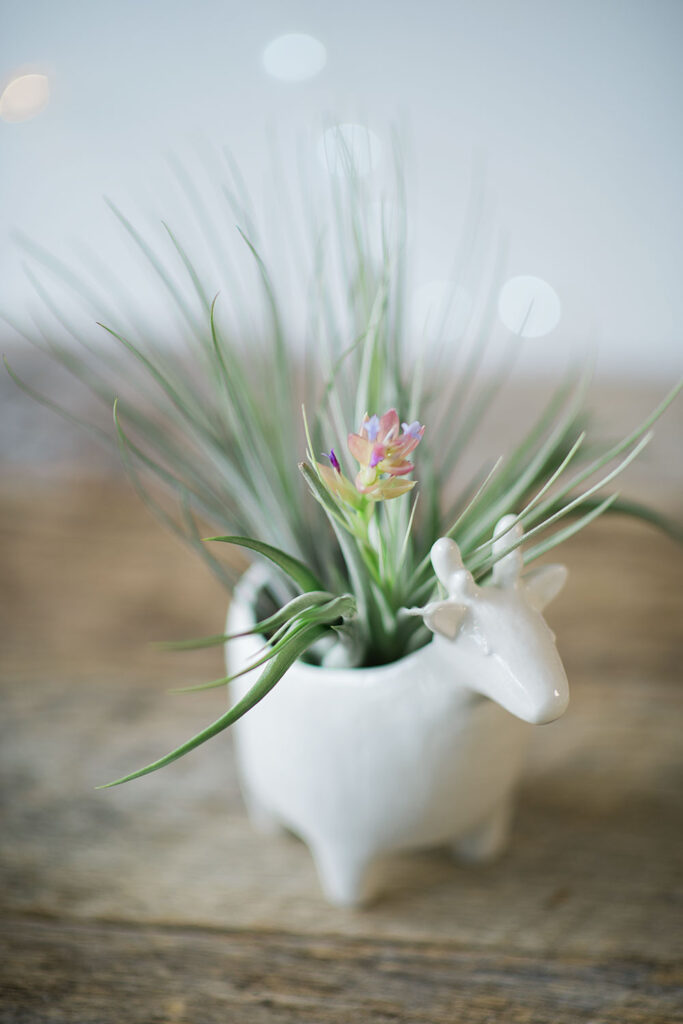
Misting your air plants once a month is not adequate. While this is the general instruction given out by an awful lot of people selling air plants, it’s simply not true.
You also cannot keep them successfully in an office with low light or only over head light. I worked a job once where I took care of plants in fancy office buildings. The number of air plants I had to throw away, because people were told they could mist them once in a while and keep them in those closet style offices was staggering.

What is needed to make a pretty air plant arrangement?
- Select a container. Appropriate containers are everything from ceramic planters (with or without drainage holes), baskets, tea cups, glass vessels or drift wood.
- Select filler for the container. This could be glass beads, small river rocks, or sand. I made a lovely arrangement using a geometric container and aquarium sand that is a very popular project post. Filler is optional. It’s there to provide some stability for the plants, but it’s not necessary. Filler can also add to the decorative nature of your arrangement.
- Select the air plants. Tillandsia come in all shapes and sizes, so find something that fits your space and container. For example a large Xerographica will be displayed totally different from a Juncea or my personal favorite the Abdita.
In a nutshell, it takes a container and a few plants. Add some decorative filler if you like.
Mix up your air plants Dried moss adds color Ionantha is very popular
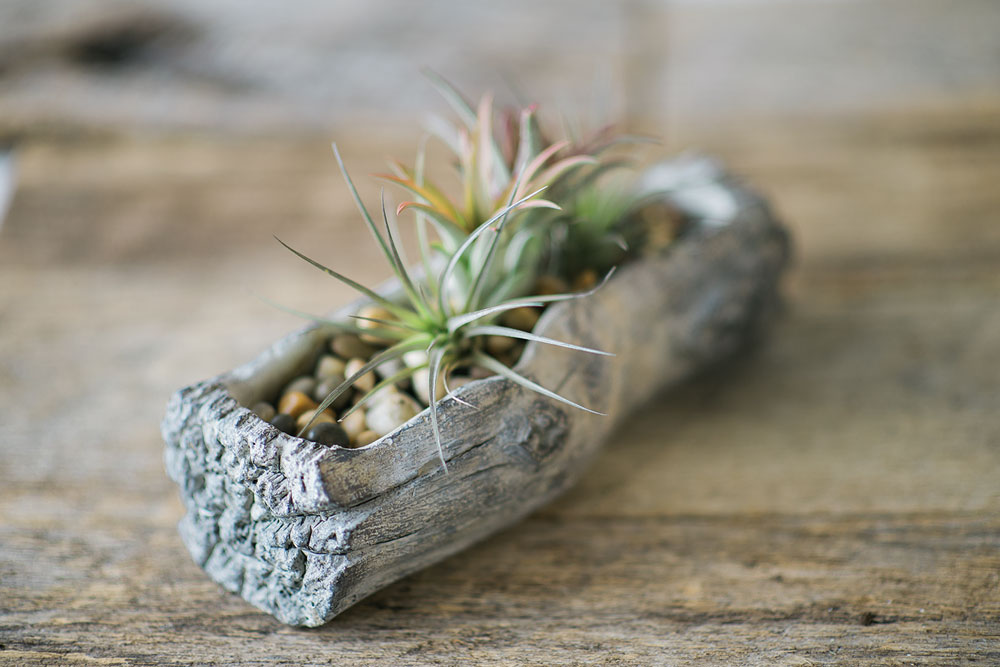
Where to buy Air Plants and supplies:
- Personally, I like to buy local whenever I can. I am blessed to live in an area with well stocked beautiful plant nurseries as well as boutique plant shops. So they are my first stop for plants and containers. I’ve also found beautiful rocks and colored aquarium sand there.
- Big box store or craft stores have a good assortment of containers and filler materials. My shop on Amazon has supplies galore.
- Air plants can be purchased online. I always recommend buying from a local seller first, but I do understand not everyone has that availability. I have purchased from The Airplant Shop online, and the plants were more exotic than what I could get locally, but they did not last as long.
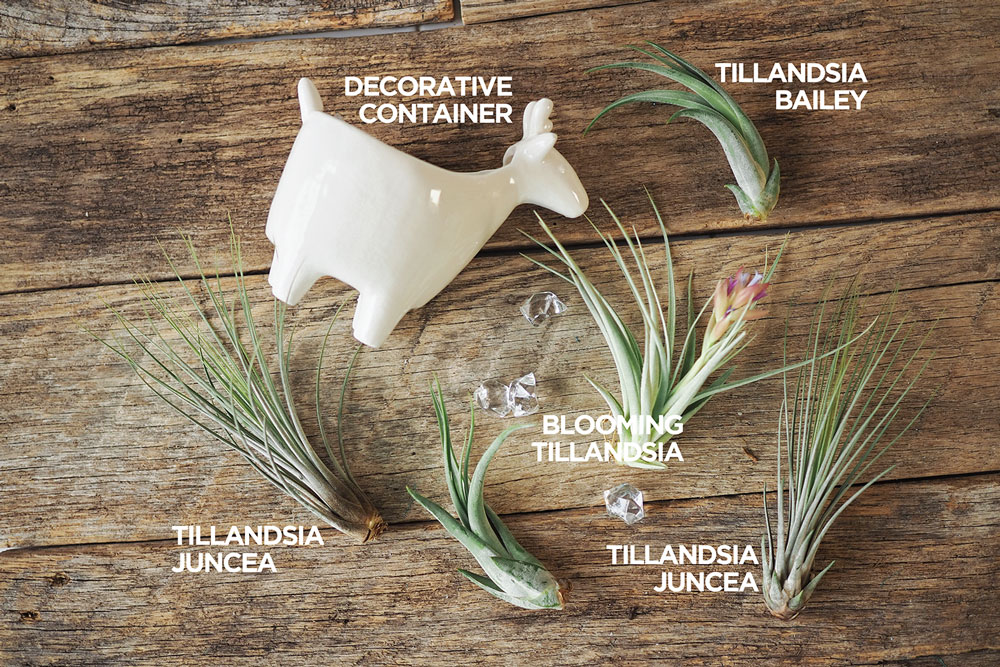
Air plants are great plants for reluctant gardeners. Or people who have a hard time managing traditional houseplants. They are beautiful in terms of their variety. And it’s incredibly freeing to use any sort of container you desire.
Enjoy this video made several years ago that demonstrates making some of the arrangements in this article. I hope it inspires you to add a few Tillandsia varieties to your indoor landscape.
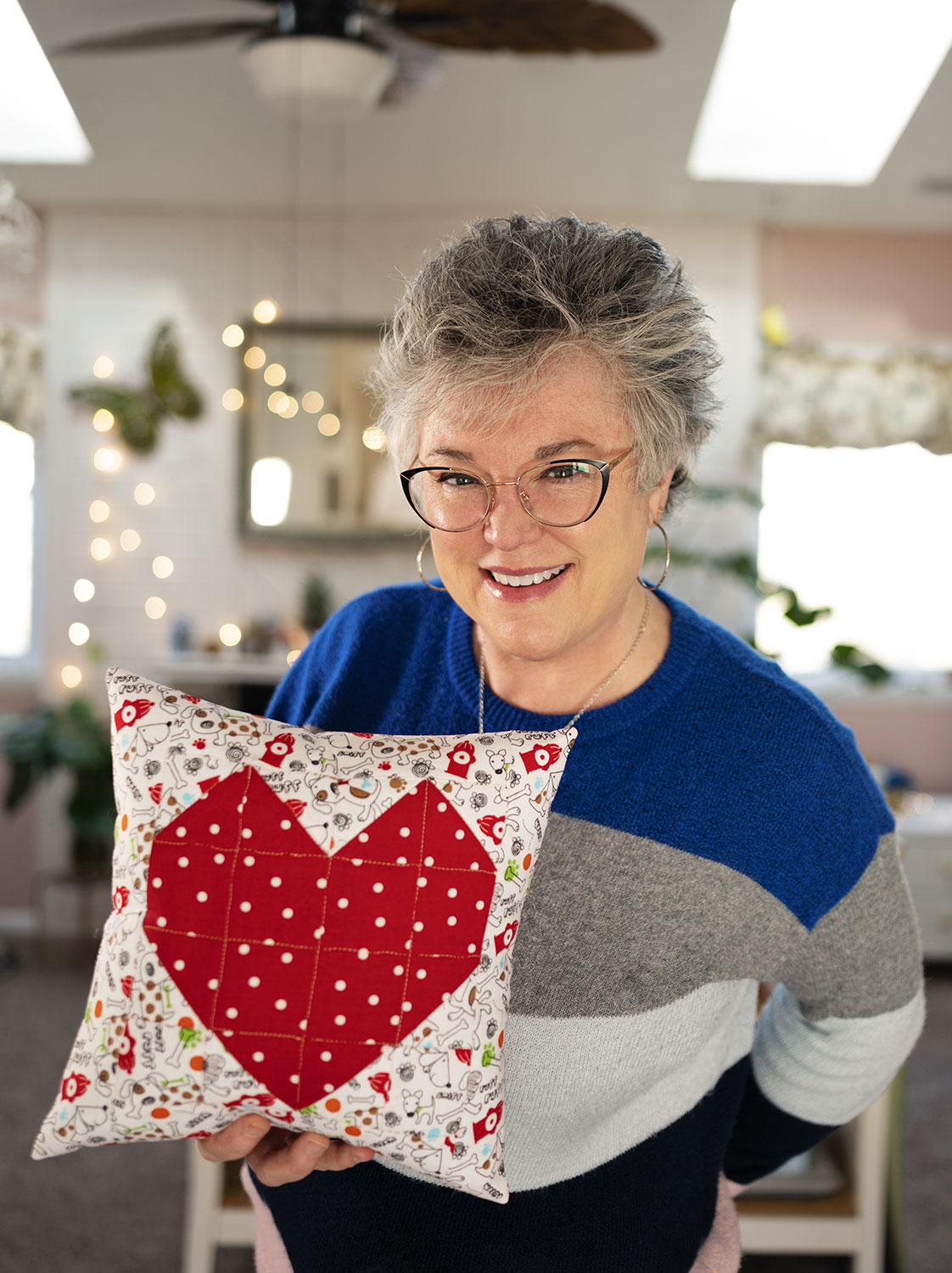
Hi! I’m Pattymac
Sewist, baker, maker
I’m a creative lifestyle blogger living and working in Coastal Virginia. When I’m not mixing or stitching or taking pictures, I’m out exploring the cook book section of my favorite library or munching my own home baked cookies at a mid week movie matinee.


